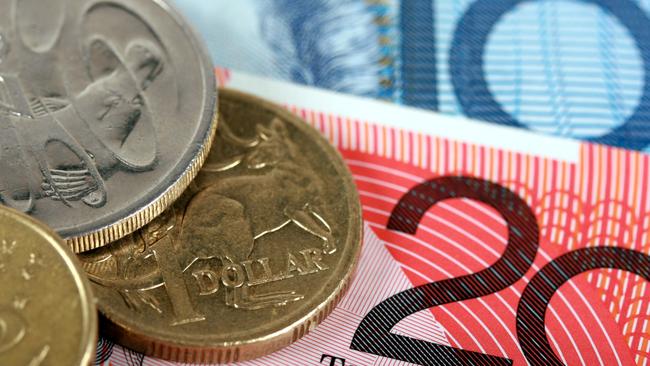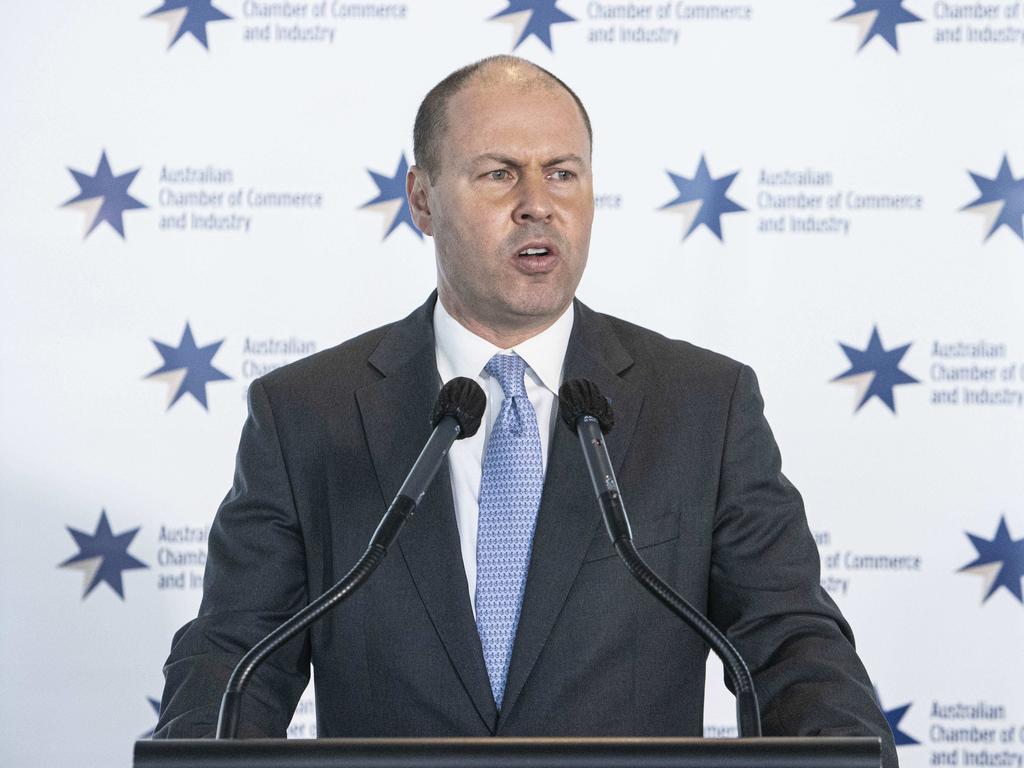
After plunging 22 per cent to a 17½-year low of US55.1c in March as the US dollar took off during the first wave of the coronavirus pandemic, the Aussie rebounded to US74.14c by September 1 as the Federal Reserve’s balance sheet expansion weakened the US dollar and the price of iron ore surged about 65 per cent.
But with the US dollar index rising as much as 1.9 per cent in the past week as global equity markets wobbled, the iron ore price down about 8 per cent and the gold price down almost 6 per cent, as well as two banks predicting RBA policy action, the Aussie dollar has dropped 3.5 per cent in five days, hitting a nine-week low of US70.28c on Thursday.
However, while it’s tempting to predict a sustained fall based on expectations of narrower interest rate differentials — particularly if the RBA starts buying longer-dated bonds more regularly — as well as the economic risk from the resurgence of coronavirus in Europe and the US, there are other factors to consider.
If the federal government delivers a major fiscal stimulus that mitigates the “fiscal cliff” in the December quarter, Australia’s economic outlook may improve relative to the US, which is facing a hiatus on monetary and fiscal stimulus before the presidential election on November 3.
Also, while more US quantitative easing now may be unpalatable politically, the Fed has consistently said that it will increase its holdings of Treasury securities and mortgage-backed securities “at least at the current pace” to sustain smooth market functioning and help foster accommodative financial conditions, thereby supporting the flow of credit to households and businesses”. Presumably if the US sharemarket falls sharply enough the Fed would immediately boost its balance sheet, capping the US dollar and thereby supporting stocks, commodities and the Australian dollar.
Once the US election is out of the way, whoever wins will have a mandate for major fiscal stimulus, particularly for infrastructure, and if the Fed then starts monetising US bond issuance in a radical way along the lines of Modern Monetary Theory, the US dollar could fall significantly.
Also, while two banks abruptly shifted their domestic monetary policy views to predict cuts in interest rates to 0.1 per cent from 0.25 per cent at next month’s RBA board meeting (NAB sees rate cuts and full-blown QE, while Westpac sees rate cuts and a broadening of RBA bond buying to the five to 10-year part of the curve), they haven’t rushed to lower their bullish forecasts for the Australian dollar.
Perhaps currency strategists will see less upside from here without necessarily predicting further significant falls for some of the reasons listed above.
Their comments so far acknowledge short-term downside risk for the Aussie but suggest it won’t be sustained through the December quarter with the US dollar bear trend expected to resume.
Interestingly, NAB technical analyst David Coloretti notes: “A material negative shift is evident in the risk environment after the S&P 500 index topped out around its 12-year trend line resistance”, leaving the Australian dollar looking “vulnerable” against the US dollar.
“Confirmation of a sustainable medium-term downtrend would occur on a weekly close below previous range highs in the US70.32c-US70.82c area with a high risk of an evolving medium-term downtrend.”
Meanwhile, local shares are finally starting to outperform as expectations of a “Team Australia” stimulus next month contrasts starkly with the US policy hiatus, with the ASX 200 up almost 1 per cent since Monday versus a 1.4 per cent fall in the S&P 500.
The Australian market may yet be dragged lower as Wall Street goes through what has historically been its worst time of year (mid-September through the first week of October), at a time when a closely contested election is delaying fiscal stimulus.
It’s early days but improving domestic coronavirus trends and expectations of fiscal and monetary stimulus in October have started to boost domestic “economic recovery stocks”.
A switch away from growth to value stocks and vaccine beneficiaries was a key recommendation from Macquarie equities this week.








With the US dollar bouncing sharply amid caution in global markets and political uncertainty before the November elections, and dovish comments from the Reserve Bank fuelling speculation of lower interest rates, the Australian dollar has been one of the worst performing G10 currencies this week.